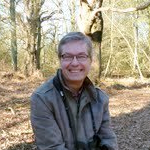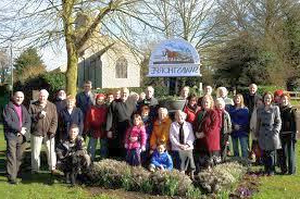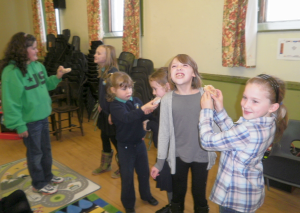 Mennonites – Amish first cousins, plain dressing, peaceable types? Well, yes that's the conservative wing of the Tradition but – in practice – Mennonites come in all shapes and sizes. Our Wood Green Mennonite Church is a little left of centre. Not a buggy in sight!
Mennonites – Amish first cousins, plain dressing, peaceable types? Well, yes that's the conservative wing of the Tradition but – in practice – Mennonites come in all shapes and sizes. Our Wood Green Mennonite Church is a little left of centre. Not a buggy in sight!
To take a quick look at the history book, Mennonites originated in the 16th century Netherlands and were named after Menno Simons, a prominent early Anabaptist leader. First generation Anabaptists were an unruly crowd but by the end of the 16th Century a pacifist consensus had emerged. All strands of the movement are marked by an emphasis on peacemaking, simplicity, community and voluntary church membership.
In Britain, 16th century Anabaptism was cut short through persecution. Now the Anabaptists are back – a small but increasingly influential movement including the Mennonites, organisations (e.g. the Root and Branch Network) and Anabaptist-ethos churches, other Christians with historic Anabaptist connections (e.g. Baptists) and the Anabaptist Network, an umbrella for UK Anabaptists.
Wood Green Mennonite Church now has Walking Church, understood as a walking fresh expression. A question arises from Wood Green's journey: what is the relationship between Anabaptism and the Emerging Church?
Scott McKnight and Don Carson have highlighted resemblances between US emerging churches and early Anabaptism. Here in the UK, with no continuing Anabaptist Tradition, the connections are more obscure. Stuart Murray Williams' influence bridges Neo-Anabaptist and emerging constituencies. Luke Bretherton highlights the influence of Anabaptist theology (John Howard Yoder and Stanley Hauerwas) in 'Remembering Our Future Explorations in Deep Church'. Andrew Jones has a helpful summary: Anabaptism and the Emerging Church. Mine is an incomplete portrait which omits, for example, the dynamic African Mennonite Churches. Significantly, these growing churches exist outside of the northern Mennonite heartlands and their Christendom history.
Speaking critically, I have a few observation on the Neo-Anabaptist and emerging scenes:
- The monastic and mystical traditions are important for both movements. Some early Anabaptist leaders had a monastic background. South German Anabaptism in particular drew heavily on medieval mysticism. The monastic influence shows in Anabaptist (especially Hutterite and Amish) corporate life. The 16th Century background is a seedbed for contemporary Neo-Anabaptist and Neo-Monastic conversations. Anabaptists in particular have a lot to learn about the broader appeal of Anabaptist spirituality.
- Both Neo-Anabaptists and emerging churches relate consciously to a Post-Christendom and Post-Modern cultural shift. These transitions are not identical. It is my impression that Neo-Anabaptists tend to emphasise the former and emerging churches, the latter.
- Considering the emerging language of Ancient-Future church, in what way the ancient is made future? Anabaptists talk about 'restitution', which implies a critical attitude to the Constantinian shift. This perspective is inherent in the dissenting witness of peace churches. Restitution, is also relevant to knotty questions of ordination. Despite many aberrations, Anabaptism still has congregational DNA. Anabaptists might ask emerging church leaders why 'Post-Christendom' has not largely led to peace churches or the abandonment of clericalism. I might ask the rapidly professionalizing north American Mennonite Church the same question. In turn emerging churches raise critical missional issues for Anabaptists.



 Gradually the church has got more involved in running events for the whole village. In 2012, the old church building – which is the only public building in the village – is being reordered to make it suitable for wider community use. When the work is done there are hopes to re-launch a monthly all age service with a new team and a mission project with an environmental focus.
Gradually the church has got more involved in running events for the whole village. In 2012, the old church building – which is the only public building in the village – is being reordered to make it suitable for wider community use. When the work is done there are hopes to re-launch a monthly all age service with a new team and a mission project with an environmental focus.
 I did msm South Wales in 2009-2010. It was timely for us to do it as Llantwit Major Benefice has nine churches, three clergy and three Readers! It gave us the kick start to do things, providing a reason to stop delaying and get on with it.
I did msm South Wales in 2009-2010. It was timely for us to do it as Llantwit Major Benefice has nine churches, three clergy and three Readers! It gave us the kick start to do things, providing a reason to stop delaying and get on with it. In a new atmosphere of optimism, I started the Messy Church at St James' Wick, which I ran for its first 18 months before handing it over.
In a new atmosphere of optimism, I started the Messy Church at St James' Wick, which I ran for its first 18 months before handing it over.